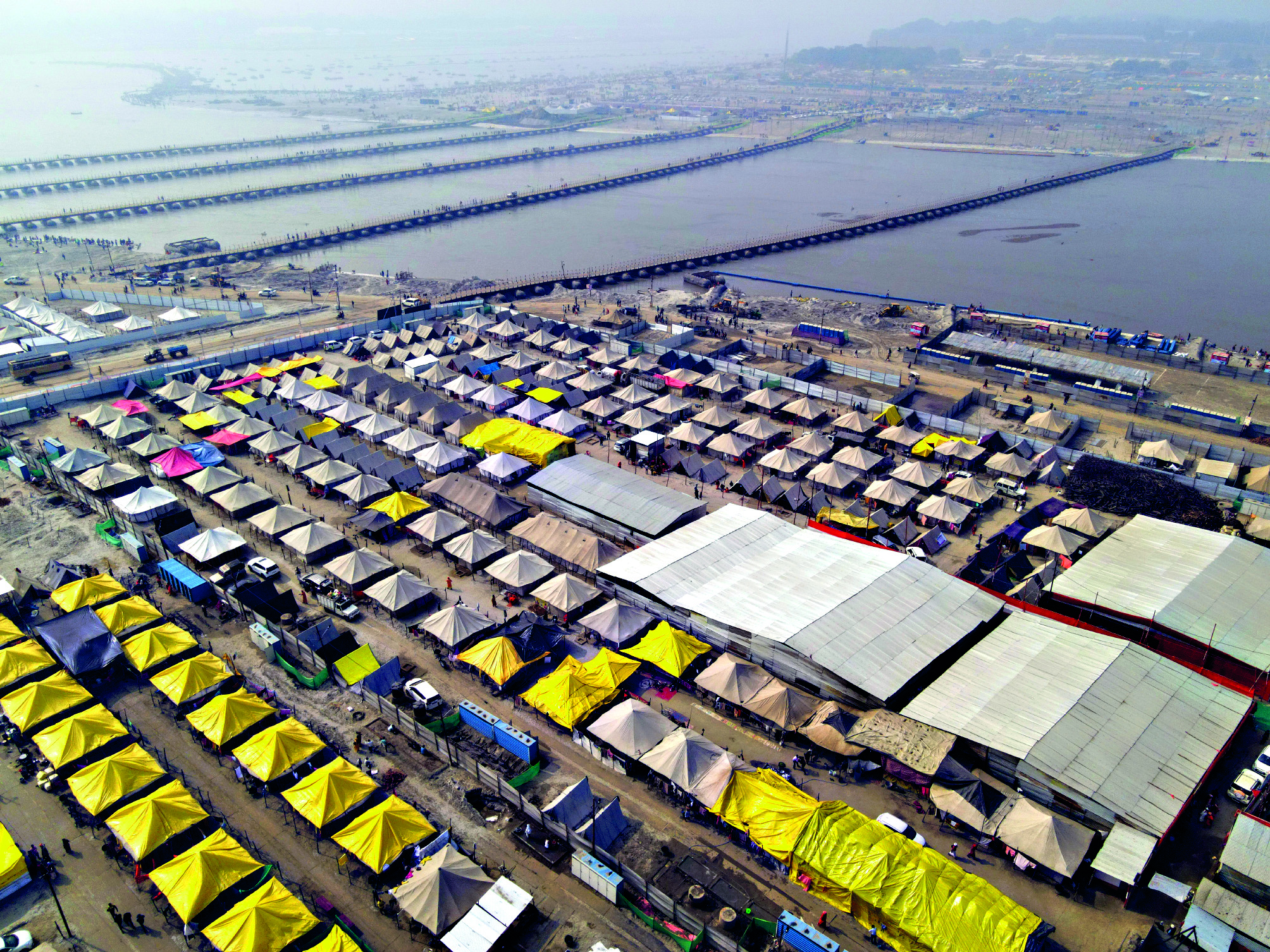A city within a city: A jaw-dropping trip into Mahakumbh’s temporary tent settlement

Mahakumbh Nagar: As Prayagraj prepares to host the Mahakumbh 2025, an awe-inspiring tent city has emerged at the Sangam. With more than one lakh tents — ranging from basic shelters to luxury accommodations — this temporary city is set to house over 10 lakh devotees. The scale of the operation is nothing short of extraordinary, with 68 lakh wooden poles and a staggering 100 km of cloth used to construct these vast settlements. The infrastructure promises not only to accommodate pilgrims but to provide them with an experience like never before.
Lallooji and Sons, a company with a century-long legacy, is responsible for building nearly 75% of the tent city. Deepanshu Agarwal, the managing partner, explained the enormity of the task. “This year’s Maha Kumbh is 800 hectares larger than the last one. We started working a year-and-a-half ago to prepare the ground for this colossal project. It takes us six months to complete the tent city, and after the fair, we need another two-and-a-half months to dismantle everything.”
The materials used are equally massive. Over four lakh poles have been set up, twice as many as in the 2019 Kumbh. The fabric, sourced from across India, including Madhya Pradesh, Gujarat, Rajasthan and Uttarakhand, covers an area so vast it is difficult to comprehend. “We’re using 100 km of cloth, and 250 tonnes of CGI sheets for roofing,” Agarwal added.
A city like no other
For the Kalpwasis — the pilgrims undertaking spiritual penance — the Maha Kumbh tent city promises both comfort and convenience. In addition to the standard tents, which offer basic shelter, luxury tents are equipped with marble flooring, cozy bedrooms, modern toilets, wooden furniture, DTH connections, Wi-Fi and even heated blankets to protect against the cold. Oil heaters are also being placed in the premium tents to save on electricity.
Raghunath, a 68-year-old Kalpwasi from Rajasthan, was overwhelmed by the grandeur. “I’ve been coming to the Kumbh for the past 40 years, but I’ve never seen anything like this before. The tents we have this time are like small homes. There is a heater, a TV, and even a fridge! This is truly a city built for the comfort of the devotees. It’s beyond anything I expected.”
His sentiments were echoed by Sushila, a 50-year-old pilgrim from Varanasi, who marvelled at the modern amenities provided. “I used to stay in a simple tent on the sand, but this year, we have everything — cushioned beds, a clean bathroom and even Wi-Fi! The organisers have really thought about our needs.”
The work of setting up the tent city is a collective effort of thousands of workers, many of whom are involved in stitching, patching and assembling the structures. Kuldeep, one of the workers who has been diligently making tents for the past two-and-a-half months, shared his thoughts. “We’re using a mix of cotton and terrycot fabric for the tents. We even put a layer of polythene inside to prevent rain from leaking through. It’s a lot of work, but we know it’s worth it. The pilgrims are going to be comfortable, and that’s what matters.”
For Rambachan, a 60-year-old worker, the Kumbh is not just about a paycheck, but a lifelong calling. “I’ve been part of this project since the time we used to get only Rs 10 for our work. Now we’re earning Rs 500 rupees a day, but the joy of contributing to such a big event is priceless.”



